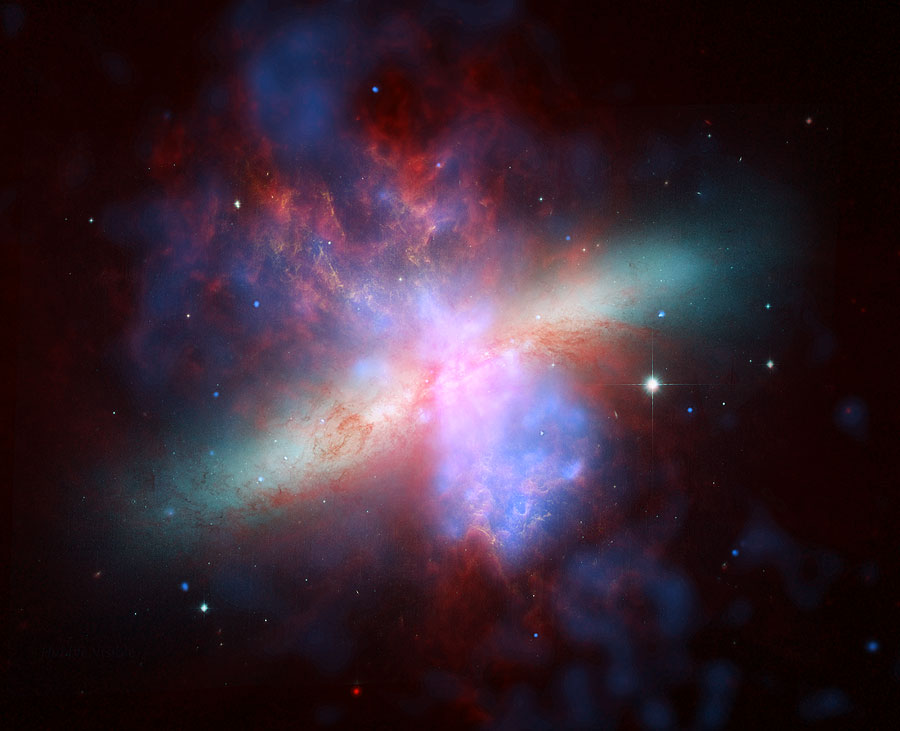Andrew Baker
Serin W309
Phone: 732-445-5500 x2544
Email: ajbaker[at]physics.rutgers.edu
Office hours: Thursday 1:40-3:00 (or by appointment)
Venue
TTh6 (5:00-6:20) in Hill Center 120, except where boldfaced below


Textbook
The only required textbook is Physics of the Interstellar and Intergalactic
Medium by Bruce Draine, copies of which should be available in the
bookstore. I would also encourage you to pick up a copy of Radiative
Processes in Astrophysics by George Rybicki and Alan Lightman, as it
will be useful in this course as well as others you may take.
I will also draw material as needed from Osterbrock & Ferland, Astrophysics
of Gaseous Nebulae and Active Galactic Nuclei, and from Spitzer,
Physical Processes in the Interstellar Medium; these (together
with Rybicki & Lightman) are on reserve in the physics library.
Overview
Here's the official course catalog listing:
"Structure of the interstellar medium: its molecular, neutral atomic, and
plasma phases. Radiative transfer, dust, particle acceleration, magnetic
Fields, and cosmic rays. Effects of supernovae, shock fronts, and star
formation."
I plan to broaden this list of topics to include the intergalactic medium; in general, I will try to highlight subjects that are important to areas of current research in extragalactic astrophysics and cosmology (e.g., galaxy formation, the enrichment of the intergalactic medium, and the reionization of the universe).
Schedule Both the sequence of lectures and the assignment due dates are preliminary at this point; I will update them as needed during the course of the semester. The last two lectures are tentatively reserved for ISM-related topics to be chosen sometime after Thanksgiving by the students who are officially enrolled in the course. These will give you an opportunity to make me sweat, thus exacting revenge for a semester's worth of problem sets.
I will include in the schedule the dates of any local talks that are relevant to the subject matter of this course. Attendance is encouraged but not required!
| LECTURE | DATE | TOPIC | TEXT | DUE |
|---|---|---|---|---|
| 1 | Sep 4 | chemical composition of the ISM | D 1.1-1.2 | |
| 2 | Sep 6 | radiative transfer | RL 1; D 7 | |
| 3 | Sep 11 | bremsstrahlung | RL 5; D 10 | PS1 |
| 4 | Sep 13 | synchrotron emission | RL 6 | |
| 5 | Sep 18 | emission lines; HI | D 6, 8 | PS2 |
| 6 | Sep 20 | absorption lines; Ly alpha | D 9 | |
| 7 | Sep 25 | HII regions | D 15 | PS3 |
| 8 | Sep 27 | atomic structure; recombination lines | RL 9, 10; D 3.4, 4 | |
| 9 | Oct 9 | collisional excitation | D 17, 19 | PS4 |
| 10 | Oct 11 | nebular emission-line diagnostics | D 18 | |
| 11 | Oct 16 | thermal equilibrium in ionized gas | D 27 | PS5 |
| 12 | Oct 18 | thermal equilibrium in neutral gas; ISM phases | D 1, 30 | |
| 13 | Oct 23 | interstellar dust: observations | D 21 | |
| 14 | Oct 25 | interstellar dust: properties | D 22, 23 | mid-term paper |
| 15 | Oct 30 | interstellar dust: physical processes | D 24, 25 | PS6 [short] |
| 16 | Nov 1 | molecular spectroscopy | RL 9, 11; D 5 | |
| 17 | Nov 6 | molecular clouds | D 32 | PS7 |
| 18 | Nov 8 | PDRs and molecular chemistry | D 31, 33 | |
| 19 | Nov 8 | interstellar magnetic fields | D 11, 21.3, 29.3 | |
| 20 | Nov 13 | fluid mechanics | D 35 | PS8 |
| 21 | Nov 15 | formation of individual stars | D 41 | |
| 22 | Nov 20 | interstellar shocks | D 36 | PS9 |
| 23 | Nov 27 | stellar winds and supernova blast waves | D 38, 39 | PS10 [short] |
| 24 | Nov 29 | the three-phase model of the ISM | D 1, 39 | |
| 25 | Nov 29 | star formation on galaxy scales | D 42 | |
| 26 | Dec 4 | feedback on galaxy scales | --- | PS11 |
| 27 | Dec 6 | intergalactic and intracluster gas | --- | |
| 28 | Dec 11 | student choice: TBD | --- | PS12 |
Grading Your course grade will be based on a weighted combination of three elements:
The mid-term paper will be a ~5pp review of the contents of a particular set of literature papers and references therein (and/or citations thereof) that address a single ISM-related topic. I will provide sets of papers for several such topics, although if none of these look sufficiently interesting then you may suggest your own theme. This should be a critical review, showing that you have thought about what you've read and are not merely repeating it, and written at a level that your classmates could understand.
The final exam will be closed-book and closed-note. The questions on the exam will be drawn from (a) the problem sets, and (b) an additional list that I will provide you with in advance; they will not cover the topics of the "student choice" lecture.
Other items